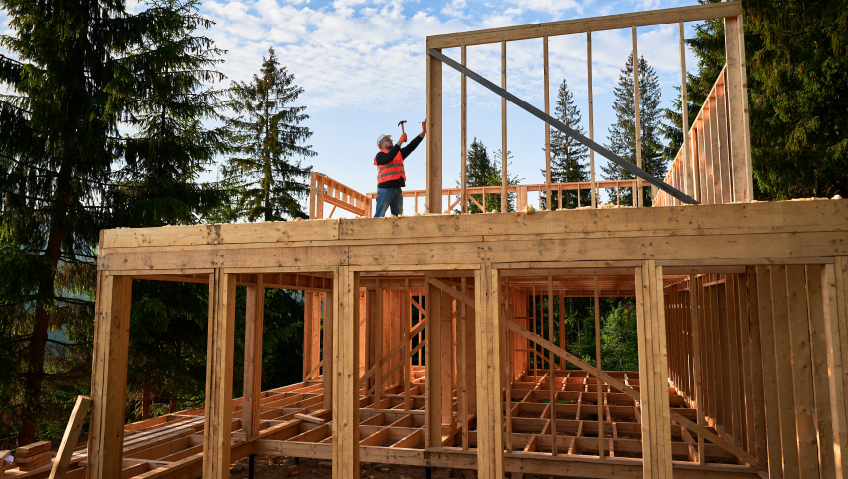As climate change appears to be speeding up, handling stormwater engineering intelligently and efficiently is a growing civil priority to ensure the safety of all. That means channeling water run-off successfully and cleaning it well before releasing it into the natural environment.
Sound easier said than done? As happens so often these days, nature appears to have the answers. There was indeed a time in human history when urbanization meant getting as far away from nature as possible as people exchanged rural living for twinkling city lights in the hope of creating more comfortable futures. And considering the hardships suffered by many earlier generations who lived off the land, the context within which the sentiment developed can help us understand their drive for modernity.
Yet, while urbanization has been a generous taskmaster, it has come with the hefty price tag of stark declines in health and wellness while impervious concrete surfaces pose a growing threat to the safety of people living in cities. And so, increasingly, reality is dawning. Humans and nature are inseparably woven together, irrespective of our personal feelings on the matter.
Today, even science agrees. Studies show that we do better physically, emotionally, and mentally when we have regular contact with natural spaces and the outdoors. Therefore, improved human wellness means better-designed cities that offer meaningful space for nature in better ways than we ever created before.
Now, instead of trying to “kill back nature,” to escape it at any cost, city planning is fast evolving into a discipline that harnesses the power and intelligence of nature by engineering and landscaping it in ways that enhance the experience of the people who use and are impacted by such shared spaces. By following this approach, we learn that nature is a far bigger boon than a threat so long as our engineers can keep up.
One world-renowned proponent of the idea of harnessing nature to save our cities is Kongjian Yu, landscape architect, urbanist, writer, educator, and developer of the Sponge City concept.
Some of the premises underlying Yu’s theory include returning the disturbed flow of natural water bodies like coastal areas and rivers while protecting undamaged shores and wetlands. Instead of ruining these natural “sponge” zones, Yu proposes improving them by supporting the ecological systems that maintain their health. These ecological services, Yu maintains, should be further enhanced through controlling droughts and floods, providing water, recharging groundwater, and preserving complex natural habitats, all while creating beautiful spaces where locals can enjoy themselves outside.
As part of what Yu refers to as “Healing the World’s Cities,” the innovator dreams of restoring the equilibrium between humans and the planet by creating increasing numbers of sponge cities across the globe that will mitigate the effects of natural disasters—and perhaps even reduce their occurrence. The current goal is for as much as 80 percent of Chinese urban developments to soak up and repurpose around 70 percent of the rain in each area by 2030. Yu’s historical contributions to international city planning and development were recently acknowledged with the Cornelia Hahn Oberlander International Landscape Architecture Prize in 2023.
Closer to home, civil authorities are coming up with groundbreaking solutions of their own. With Canada being the water-rich land it is, good planning here comes with its own prerequisites. Some ideas Canadians have come up with include implementing fewer impervious surfaces and replacing them with absorbent surfaces instead, creating bioswales, infiltration systems, green roofs, planting more trees, better soil management, and collecting roof run-off.
One particularly proactive local organization is the Lake Simcoe Region Conservation Authority. Senior Manager of the Sustainable Technologies Evaluation Program (STEP) at Toronto Region Conservation Authority (TRCA), Steve Auger is at the helm of the teams developing and implementing new ways of dealing with potentially hazardous stormwater and stimulating more integrated teamwork amongst municipalities. Their initiatives handle improvements to erosion and sediment control, urban water run-off, implementing green infrastructure, natural features, and systems, and other functions. “It really is about creating the stage and setting [municipalities] up for success to do the work that we think should be done for resilience and for climate mitigation,” Auger told engineerscanada.ca.
In the United States, a growing focus on green infrastructure is just one of the solutions aimed at better managing the large volumes of water hitting urban landscapes annually. While umpteen definitions exist for the concept, American Rivers, a national organization focused on clean water and river health, approaches its definition as managing water by replicating the wisdom of nature while safeguarding and returning natural systems to their former glory. “It means planting trees and restoring wetlands rather than building a costly new water treatment plant. It means choosing water efficiency instead of building a new water supply dam. It means restoring floodplains instead of building taller levees,” the organization states on its website.
While this approach is certainly in line with Oberlander laureate Yu’s views of recreating a “sponge planet,” handling potentially life-threatening floods at the street level currently still involves coming up with hard infrastructure ideas. This brings us to bioswales, retention ponds, and similar concepts. Purpose-engineered bioswales appear to have first hit communities in the late 1990s when urban engineers decided to protect natural water bodies by filtering polluted water run-off with the help of soil and plants—like nature intended.
Today, these engineered run-off channels are a growing phenomenon, with the New York City Department of Environmental Protection (DEP) having installed well over 10,900 of them, terming them rain gardens. Judging by the department’s map of current green infrastructure projects in and around the city, New York is fast becoming a prime example of how to better handle disasters like the destruction caused by Hurricane Ida, which had calmed to a post-tropical cyclone when it crashed into the city on September 1, 2022, killing 13 residents—the city’s highest rainfall event to date. New York is working hard to improve the city’s green infrastructure by improving its sewer systems, installing flood sensors, and, of course, building as many rain gardens as it can.
By continuing the conversation and bringing these ideas to residents, people can get involved in caring for rain gardens and other “sponge” infrastructure, in the process allowing people to start reconnecting with nature. If ever there was a drive to reconsider our connection with the wild, this is perhaps it.






